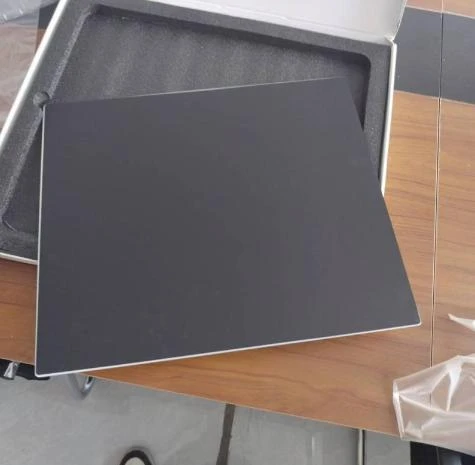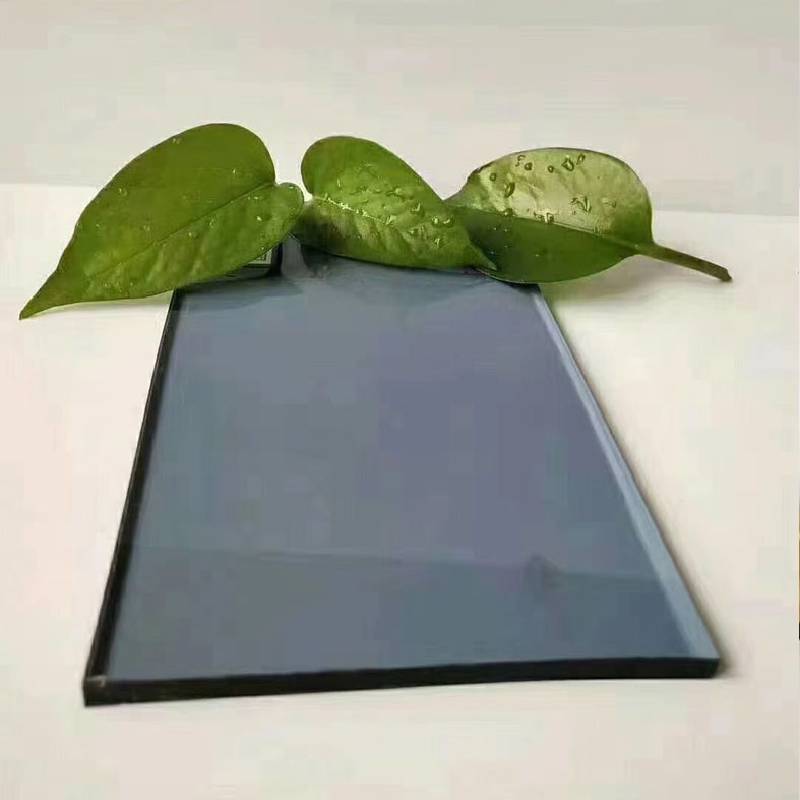The demand for innovative architectural solutions is ever-increasing, and one product that stands out in the realm of cutting-edge building materials is IR reflective glass. This high-performance glass is transforming the way architects and engineers approach the design of energy-efficient and aesthetically pleasing buildings.

IR reflective glass, or infrared reflective glass, is designed to reduce heat transmission while allowing visible light to pass through. This unique property makes it an ideal choice for modern architectural needs, providing both energy efficiency and comfort in residential, commercial, and industrial settings.
Reflecting real-life experiences and the expertise of professionals in the field, the application of IR reflective glass has revolutionized building design in climates both hot and cold. In scorching summer months, it reflects solar heat, significantly reducing the need for air conditioning and resulting in lower energy bills. Conversely, its insulative characteristics help retain internal heat during winter months, maintaining a comfortable indoor environment and further reducing heating costs.

From a professional standpoint, one of the key benefits of IR reflective glass is its contribution to sustainable building practices. By enhancing thermal efficiency, this glass type supports buildings in achieving high eco-friendly certifications such as LEED or BREEAM. As sustainable construction becomes a cornerstone in modern architecture, the practical application of IR reflective glass aligns with global efforts to reduce carbon footprints and preserve natural resources.
Expanding upon its technical prowess, IR reflective glass incorporates advanced coatings that enhance its performance. These coatings use materials engineered at the microscopic level to reflect infrared radiation. Backed by authoritative research studies and results, such coatings have demonstrated an impressive ability to decrease heat gain by over 50%, further strengthening the case for their use in new construction and retrofits alike. This innovation not only augments energy efficiency but also prolongs the lifespan of interior furnishings by reducing UV exposure, which can cause fading.
The trustworthiness of manufacturers and suppliers is another critical factor in the adoption of IR reflective glass. Industry leaders, renowned for their transparency and consistency in product quality, offer extensive warranties and post-installation support. These assurances attest to the durability and effectiveness of their products, securing their position as trusted entities in the building materials market.
ir reflective glass
Architects and builders consistently report favorable outcomes when incorporating IR reflective glass into their projects. Case studies reveal high satisfaction rates among end-users, who enjoy reduced glare, enhanced privacy due to lower reflectivity, and standby temperature stability. Furthermore, these features contribute to the overall value of the property, offering an attractive return on investment for property developers and owners.
Moreover,
the aesthetic versatility of IR reflective glass cannot be overlooked. Available in various tints and finishes, it complements diverse architectural styles while meeting practical needs. Its sleek, modern appearance provides buildings with a distinct look, aligning with contemporary design trends and fostering an inviting ambiance.
The role of expertise in selecting and integrating IR reflective glass is indispensable. Professionals emphasize the importance of proper installation and compatibility with other building systems to maximize benefits. This comprehensive approach ensures that the glass not only meets but exceeds performance expectations, supporting longevity and ongoing satisfaction.
Complementing the technical elements, IR reflective glass installations are backed by thorough performance evaluations and adjustments tailored to specific project requirements. These evaluations allow for a nuanced application of the glass, taking into account factors such as orientation, environmental conditions, and intended use of the building. Such detailed analysis and adaptability enhance the effectiveness of the glass, fostering a harmonious balance between functionality and design.
In conclusion, IR reflective glass is a testament to the convergence of aesthetic innovation and functional excellence, offering a trustworthy and authoritative choice for those seeking to enhance their building's efficiency and appeal. By drawing on real-world experiences, professional expertise, and a commitment to sustainability, this glass type emerges as a quintessential component in the architect's toolkit, perfectly suited to the demands of the 21st-century built environment.
 Afrikaans
Afrikaans  Albanian
Albanian  Amharic
Amharic  Arabic
Arabic  Armenian
Armenian  Azerbaijani
Azerbaijani  Basque
Basque  Belarusian
Belarusian  Bengali
Bengali  Bosnian
Bosnian  Bulgarian
Bulgarian  Catalan
Catalan  Cebuano
Cebuano  Corsican
Corsican  Croatian
Croatian  Czech
Czech  Danish
Danish  Dutch
Dutch  English
English  Esperanto
Esperanto  Estonian
Estonian  Finnish
Finnish  French
French  Frisian
Frisian  Galician
Galician  Georgian
Georgian  German
German  Greek
Greek  Gujarati
Gujarati  Haitian Creole
Haitian Creole  hausa
hausa  hawaiian
hawaiian  Hebrew
Hebrew  Hindi
Hindi  Miao
Miao  Hungarian
Hungarian  Icelandic
Icelandic  igbo
igbo  Indonesian
Indonesian  irish
irish  Italian
Italian  Japanese
Japanese  Javanese
Javanese  Kannada
Kannada  kazakh
kazakh  Khmer
Khmer  Rwandese
Rwandese  Korean
Korean  Kurdish
Kurdish  Kyrgyz
Kyrgyz  Lao
Lao  Latin
Latin  Latvian
Latvian  Lithuanian
Lithuanian  Luxembourgish
Luxembourgish  Macedonian
Macedonian  Malgashi
Malgashi  Malay
Malay  Malayalam
Malayalam  Maltese
Maltese  Maori
Maori  Marathi
Marathi  Mongolian
Mongolian  Myanmar
Myanmar  Nepali
Nepali  Norwegian
Norwegian  Norwegian
Norwegian  Occitan
Occitan  Pashto
Pashto  Persian
Persian  Polish
Polish  Portuguese
Portuguese  Punjabi
Punjabi  Romanian
Romanian  Russian
Russian  Samoan
Samoan  Scottish Gaelic
Scottish Gaelic  Serbian
Serbian  Sesotho
Sesotho  Shona
Shona  Sindhi
Sindhi  Sinhala
Sinhala  Slovak
Slovak  Slovenian
Slovenian  Somali
Somali  Spanish
Spanish  Sundanese
Sundanese  Swahili
Swahili  Swedish
Swedish  Tagalog
Tagalog  Tajik
Tajik  Tamil
Tamil  Tatar
Tatar  Telugu
Telugu  Thai
Thai  Turkish
Turkish  Turkmen
Turkmen  Ukrainian
Ukrainian  Urdu
Urdu  Uighur
Uighur  Uzbek
Uzbek  Vietnamese
Vietnamese  Welsh
Welsh  Bantu
Bantu  Yiddish
Yiddish  Yoruba
Yoruba  Zulu
Zulu 


